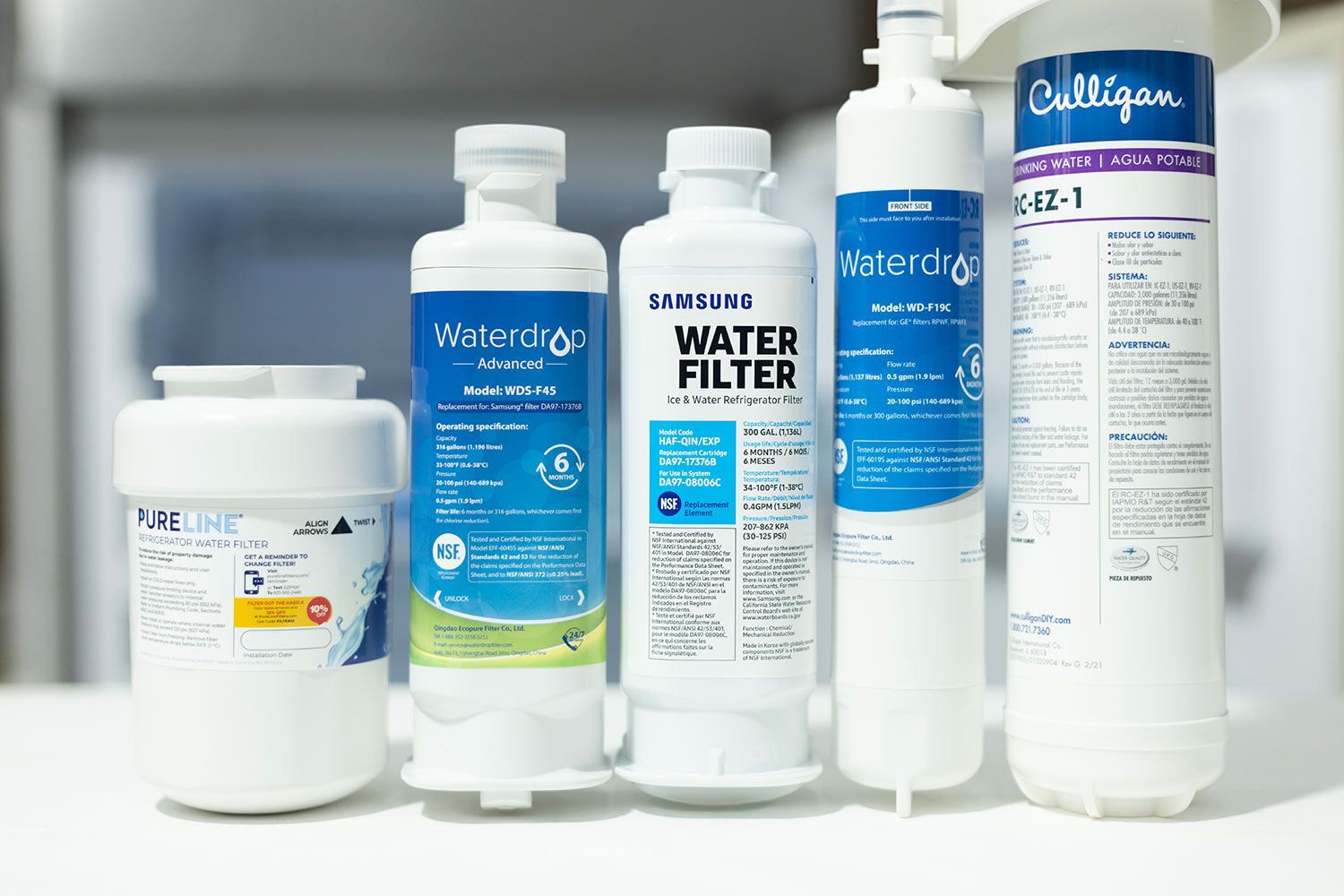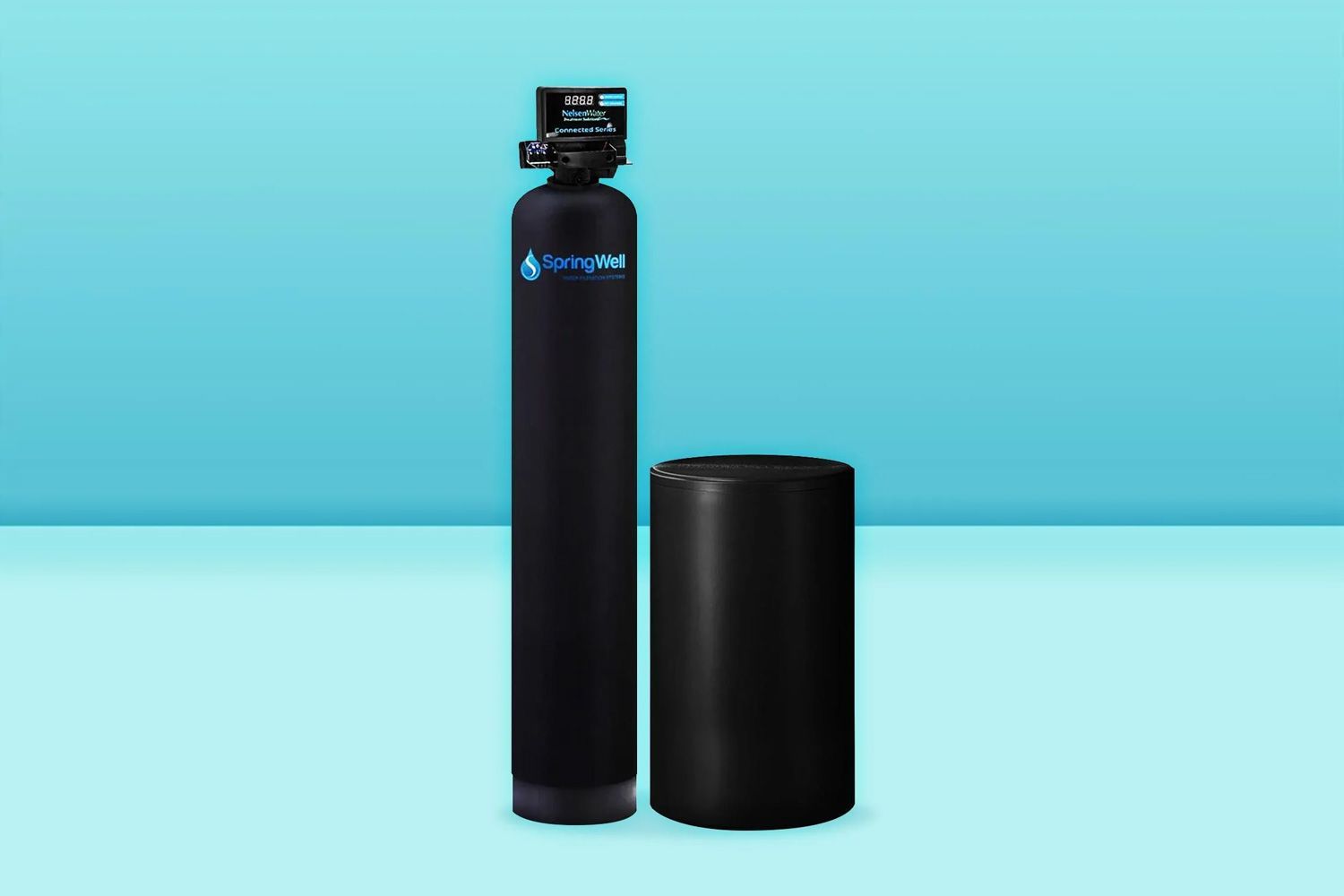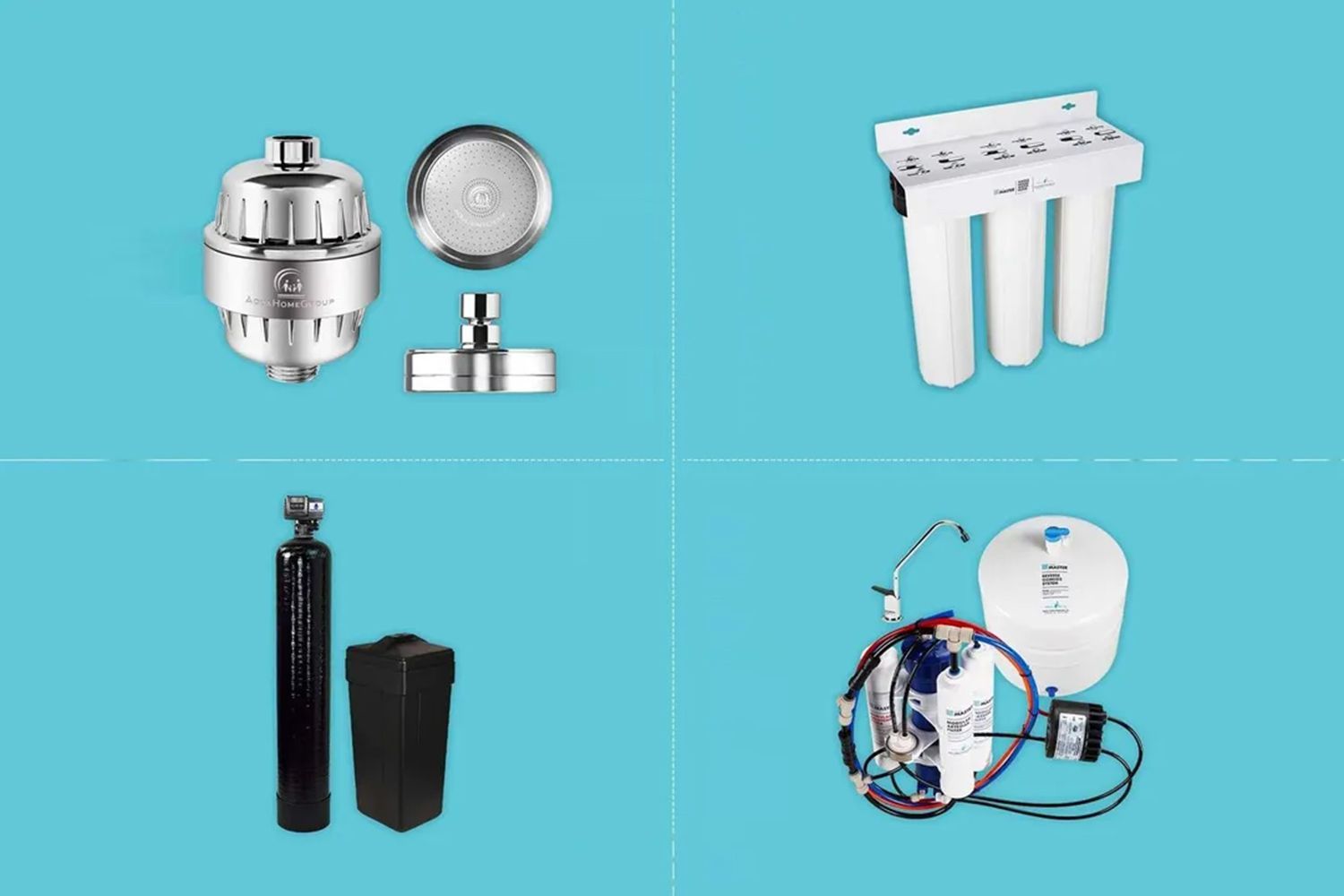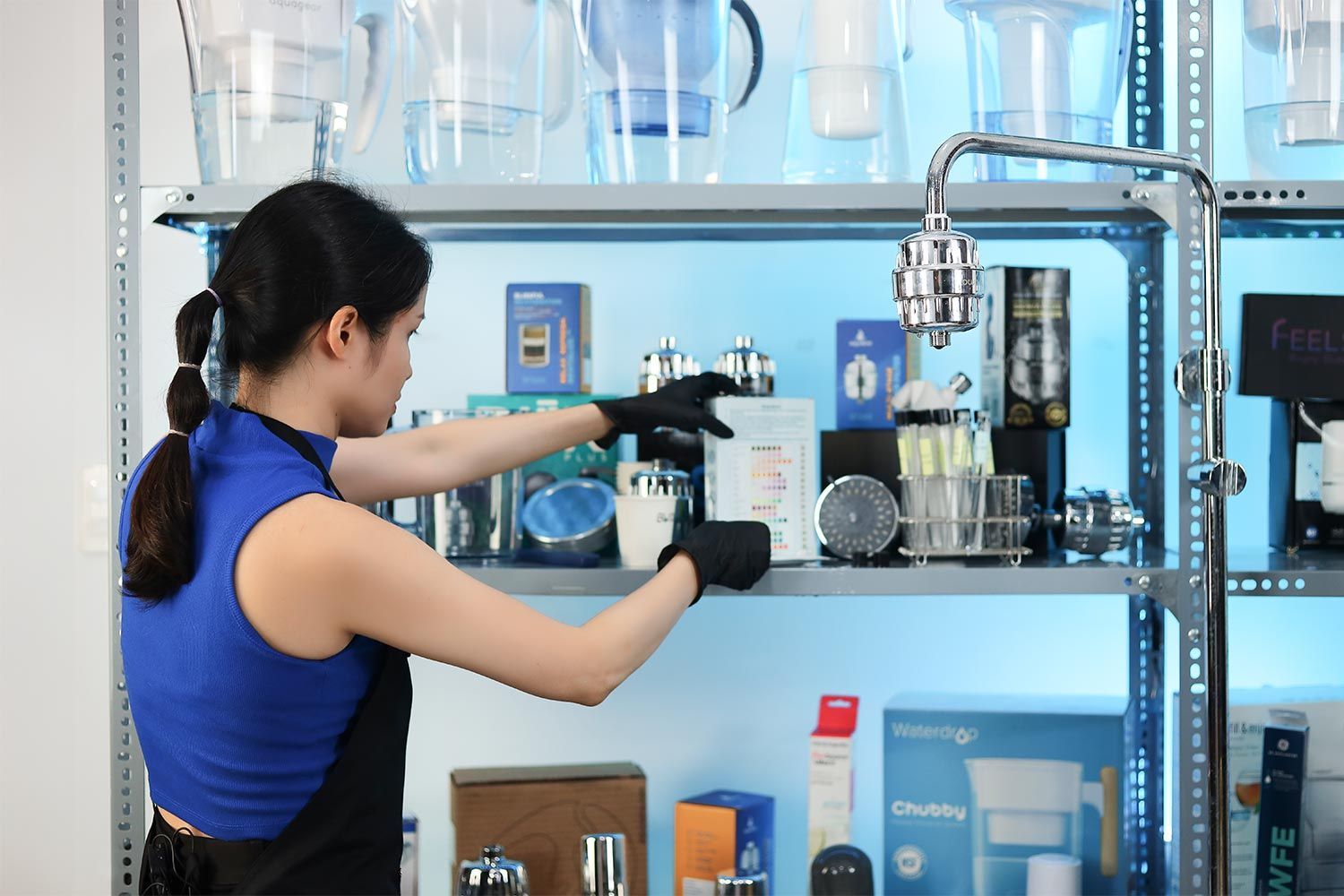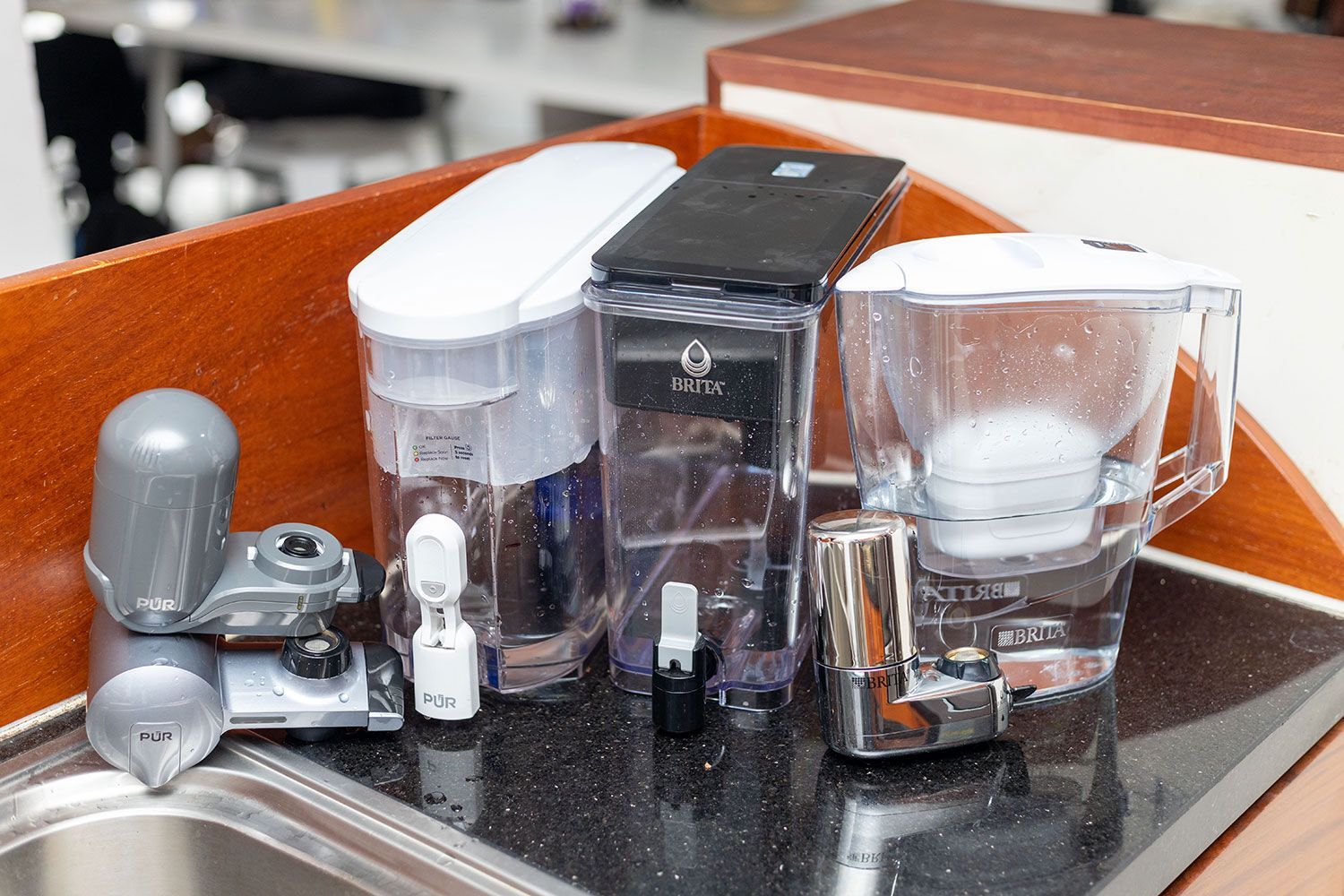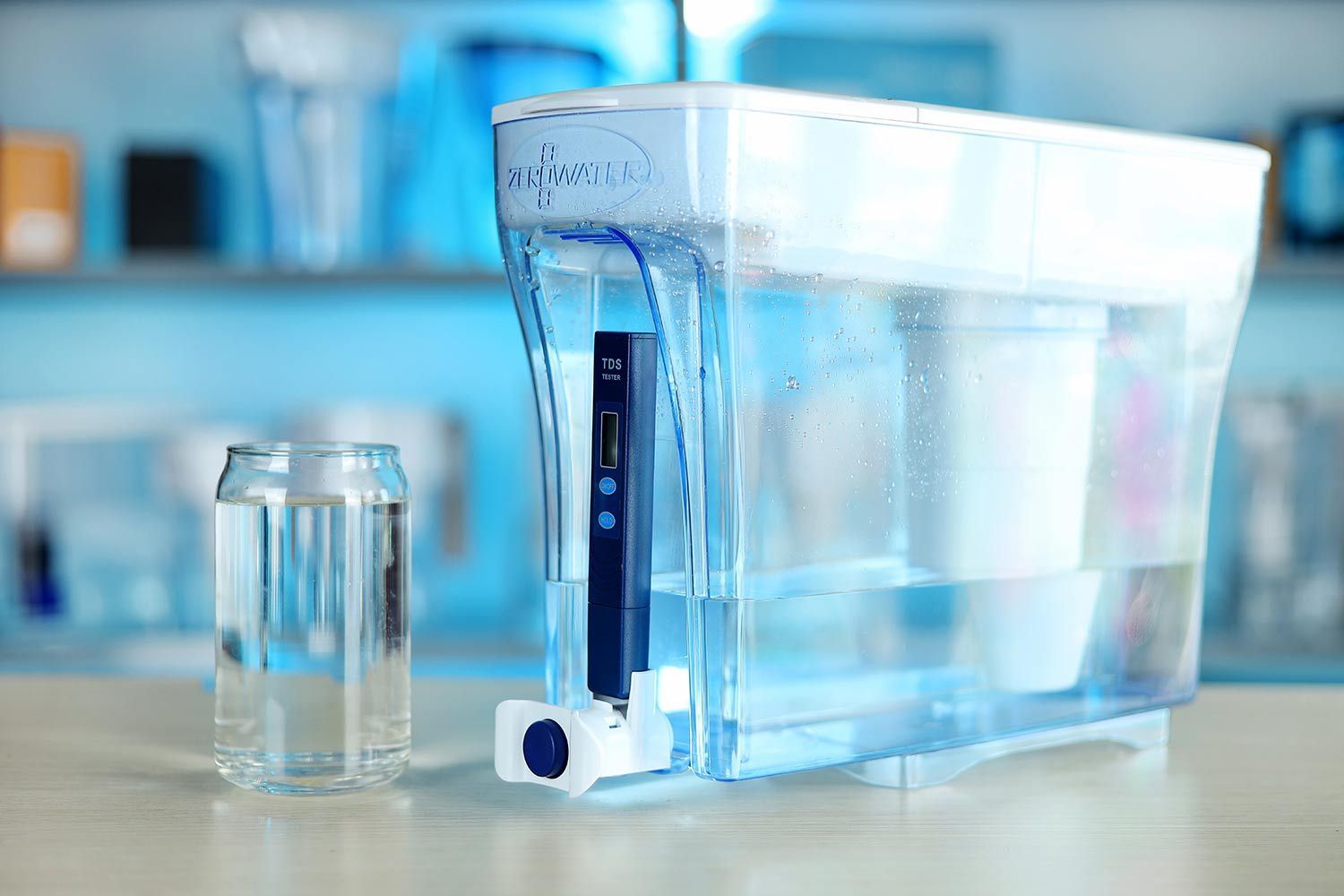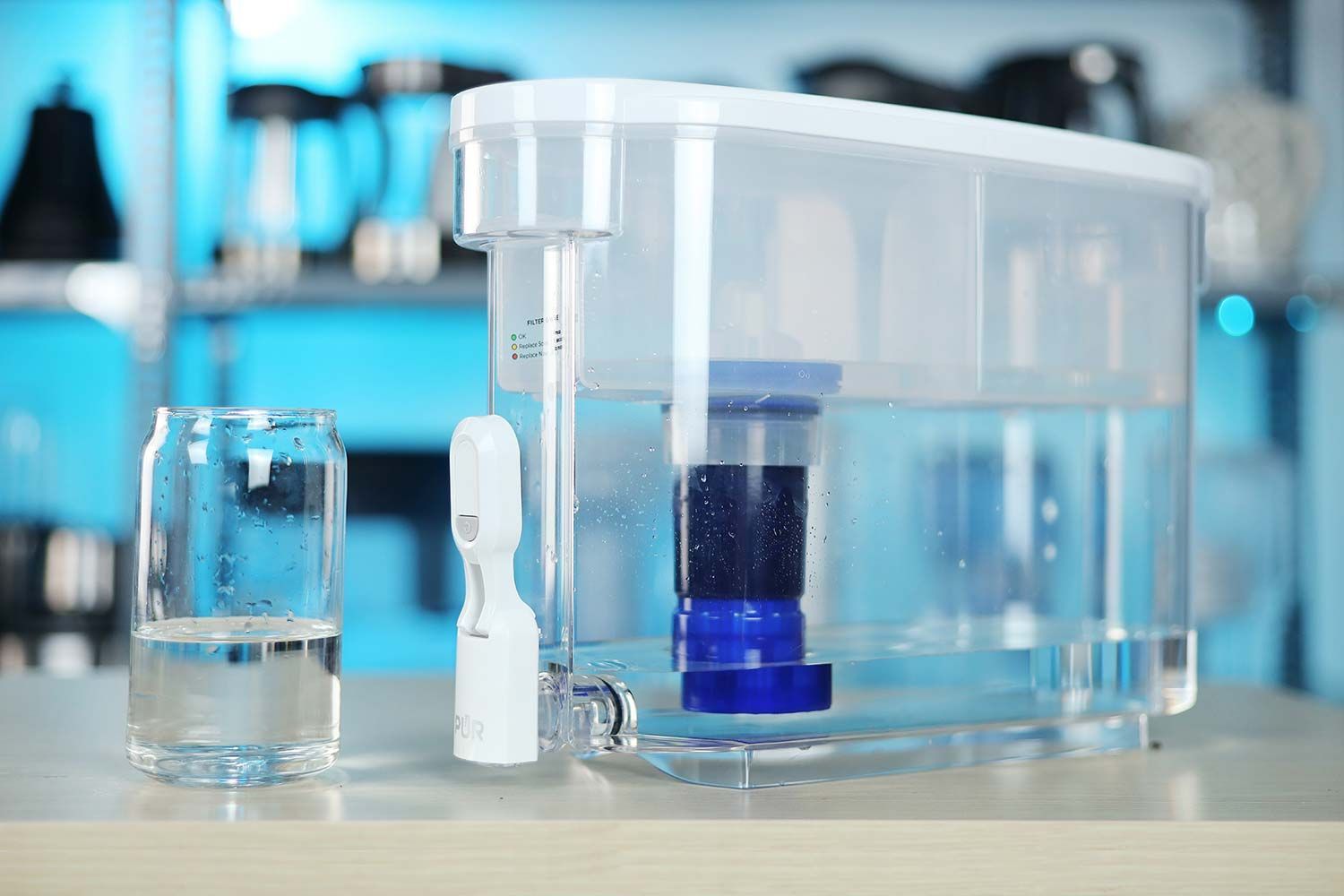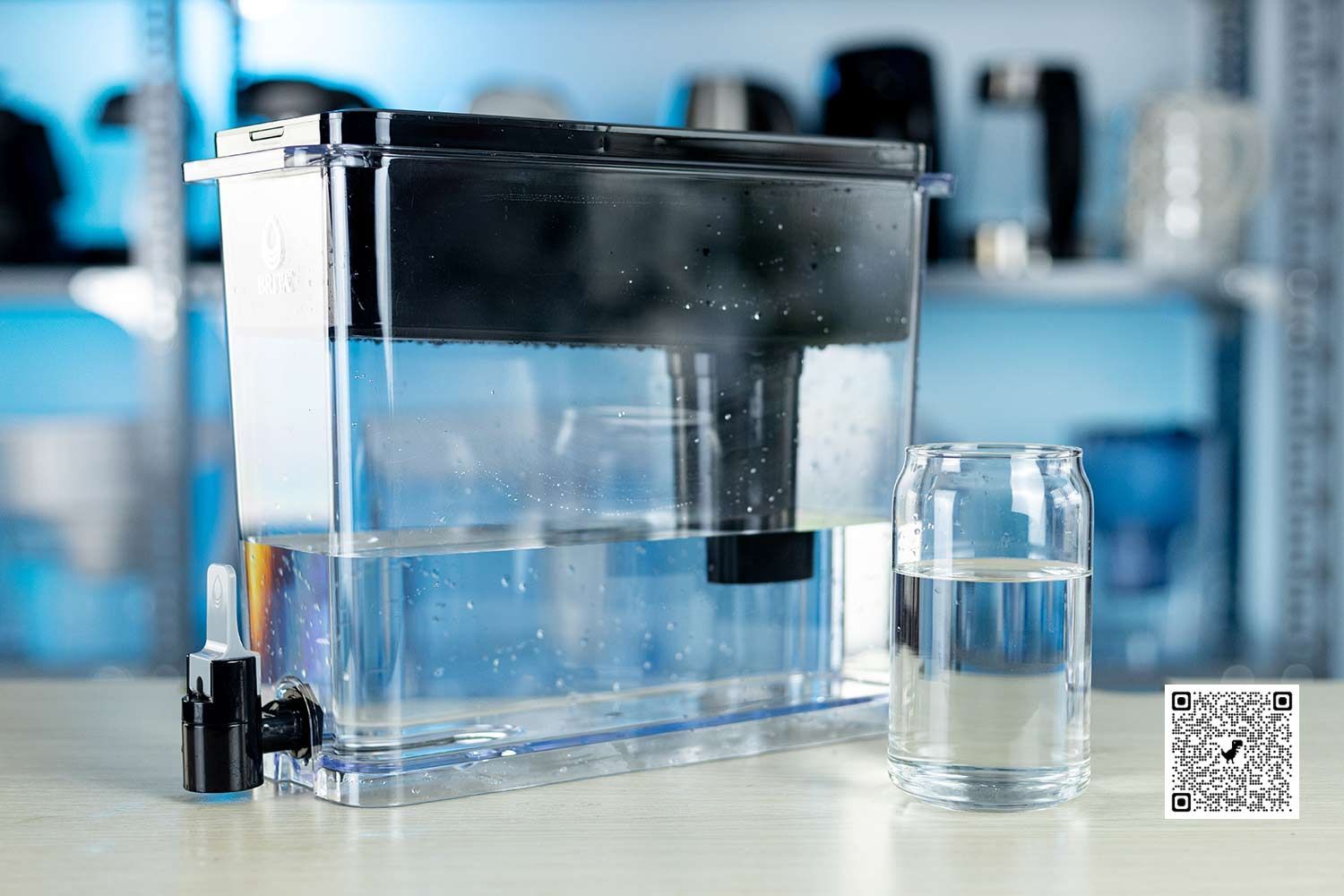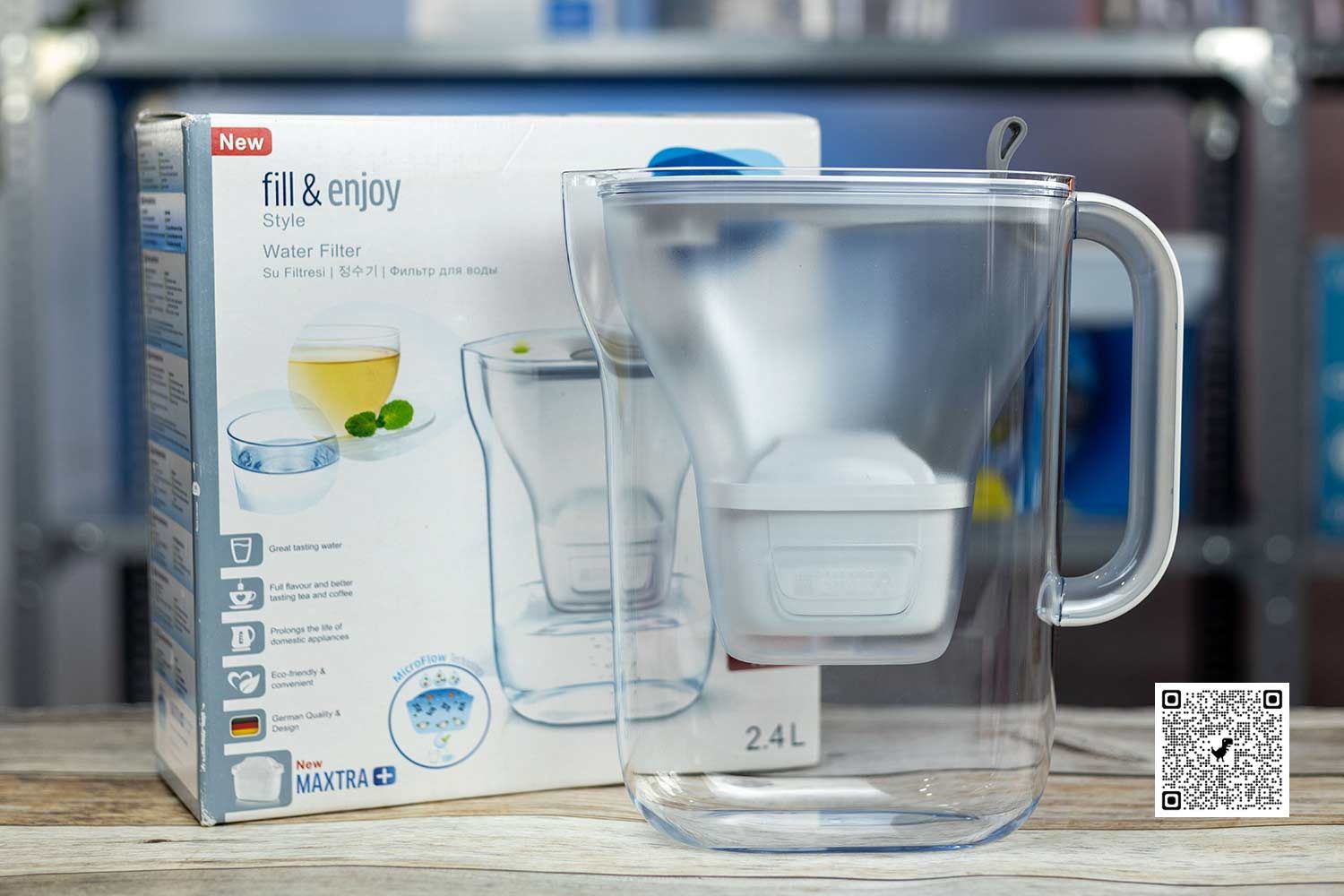The Best Water Filter Pitchers Tested & Reviewed

For renters and small households seeking pure, crisp water, a water filter pitcher is the perfect solution. Portable, affordable, and easy to use, these pitchers deliver fresh water without the hassle of installing a full filtration system. Despite marketing claims, however, not all filter pitchers are created equal. To help you find the best water filter pitchers, we bought over a dozen popular models and put them all through the same rigorous tests.
After months of testing, the Brita Metro stood out as the best choice, producing clean, crisp water with an impressive flow rate, while being surprisingly affordable. If you’re looking for absolutely pure water in the sense that it has zero TDS, then go for the ZeroWater 10 cup pitcher.
Our Recommendations
The Brita Metro pitcher is an all-rounder, making great-tasting water and delivering it quickly. We love how it’s compact, well-built, and easy to use, all while being so affordable. It comes from the staple brand Brita, with all the right certifications, and a performance to match in our tests.
The Aquagear 10 cup filter pitcher comes at a slightly higher price than most other pitchers, but in this case, you get what you pay for. The superb water quality it delivers alone justifies it. What’s more to like: It has one of the fastest slow rates we’ve ever come across, and the filter also lasts three times longer than a standard filter.
For those who prioritize a low TDS value, the ZeroWater filter pitcher is your best bet. Using the same test water, this pitcher returned 0 ppm every single time, while all others fell into the range of 50-70 ppm. The pitcher comes with its own TDS meter so you can verify. Don’t worry about it being biased: We’ve tested the meter on water produced by other pitchers, too, with consistent results.
The Waterdrop Chubby is one of the very few that managed to impress us in both performance and aesthetics. It comes with an NSF-certified filter that takes just a little over 20 seconds to produce a full glass of water, and a pitcher that you may actually want to display on your kitchen counter.
The LifeStraw filter jug isn't just visually distinctive—it also features a unique filtration system certified to remove chlorine and a wide range of contaminants. Among all the pitchers we've tested, it delivered the best-tasting water, earning a perfect score from our testers. However, its slow flow rate makes it more suitable for a one-person household.
For families who find a full option water dispenser too much and a pitcher too small, the Brita UltraMax strikes the perfect balance. Its fast and effective Brita filter piece and the 27 cup capacity mean you will always have clean water for drinking and cooking in the home.
How We Test
The water quality a filter pitcher can produce is the most important factor when buying one. We test this by feeding each pitcher with highly chlorinated water and seeing if it can bring it to a safe level for drinking. Three testers then drink the water and rate its taste and smell.
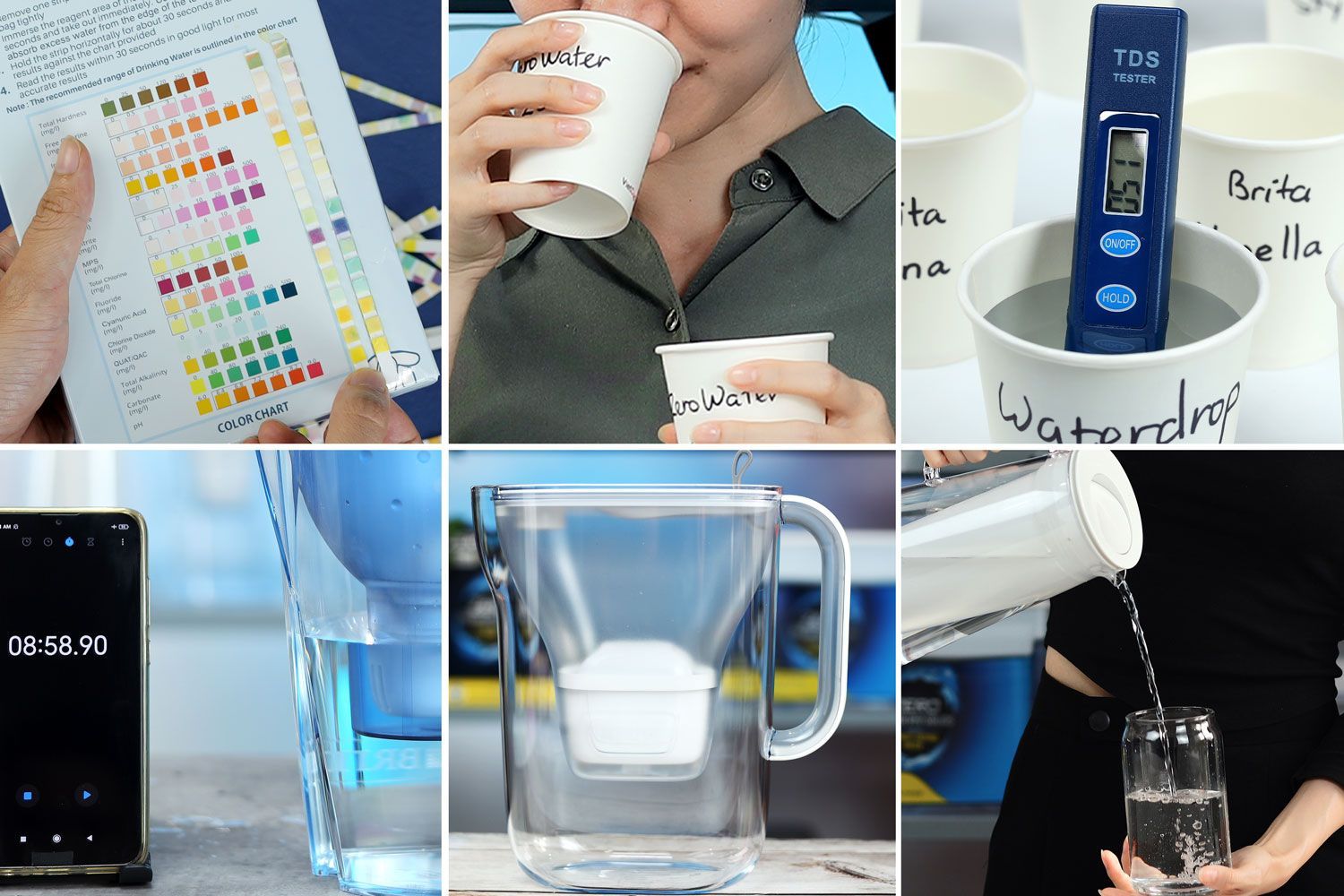
Additionally, we measure the TDS (total dissolved solids) level, though it’s not a factor in our ratings.
At the same time, we measure the flow rate, which determines both your wait time and the pitcher’s actual serving capacity.
As an item to be used multiple times a day, we also determine which ones require the least effort to use: considering assembly, disassembly, cleaning, and filter replacement. The design and how it affects usability are also taken into account.
Check out How We Test and Score Water Filter Pitchers for an in-depth look at our evaluation process.
How We Choose
The table below shows the ratings and rankings of all the products we’ve tested, so you can easily compare them in terms of performance, design, and usability. The higher a product’s ranking, the more likely it is to make our recommendation list.
However, to be included in our Best Buy list, the products must also offer good value for the money. As such, we take into account their prices, overall customer satisfaction, and whether the brand is well-established and credible.
Brita Metro 6-Cup Filter Pitcher
Best to Buy
The Brita Metro pitcher is an all-rounder, making great-tasting water and delivering it quickly. We love how it’s compact, well-built, and easy to use, all while being so affordable. It comes from the staple brand Brita, with all the right certifications, and a performance to match in our tests.
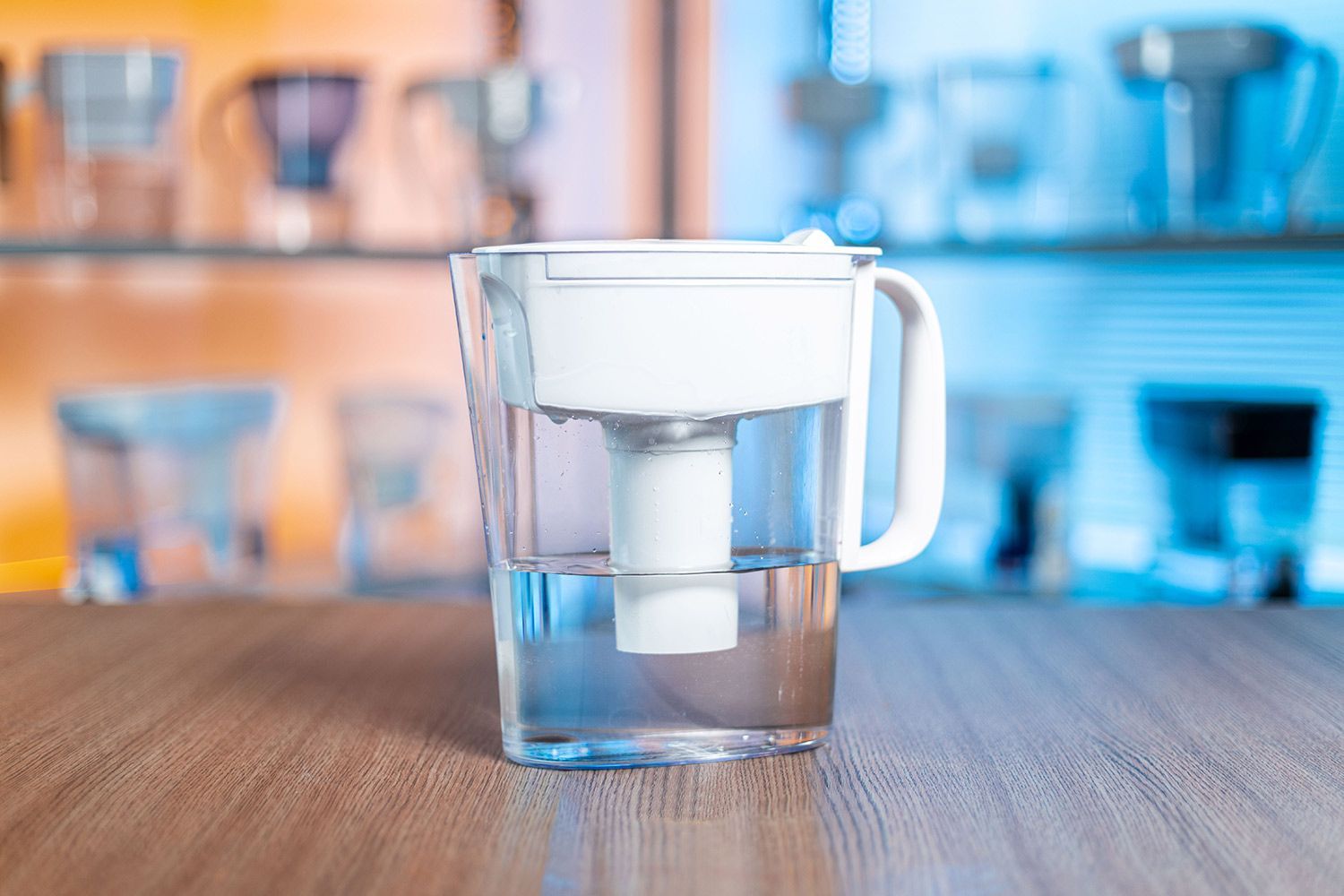
Things We Like
- NSF-certified filter
- Compatible with Standard and Elite filters
- Lightweight, compact design, fits a refrigerator door bin
- Excellent flow rate
- Easy cleanup (new model)
Things We Don’t Like
- Filter needs multiple pre-soaking
- Small flap door handle
Don’t let the modest size or basic design fool you. The Brita Metro repeatedly brought the high chlorine concentration in our test water to a safe level. Its NSF-42-certified Brita Standard filter packs not only activated carbon but also an ion-exchange resin, plus built-in mesh screen to minimize leaks.
All those layers of filtration media don’t seem to affect the flow rate: the pitcher could produce a standard 8-ounce glass within less than 30 seconds in our tests.
With such a fast wait time, the Metro has no problem hydrating two persons throughout the day, despite the small pitcher size (6 cups). Plus, it can stay comfortably in a fridge door like no other. Our testers also loved the low weight, as it means you won’t have bicep cramps from picking it up every time.
Like other Brita models, this one is made with BPA-free materials. After a year of use, the plastic casing still looks like new (whereas some others have started to collect scratches and turn more opaque). If you’re looking at the new model, it has a more subtle flap door that’s easier to work with, and a more elegant look compared to the old model. Both feature a filter life indicator to remind you when to change the filter. Replacement takes about 30 seconds and hardly any effort; that said, we did have to flush the new filter more times than recommended before the black particles stopped coming out.
If you’re going with the pre-packaged Standard filter, replacement will be every two months. A six-count package currently costs under $30, so that’s 8 cents per day for quality drinking water. Compare it to bottled water, and you’ll see why the Metro is a way better choice for your wallet and the environment.
The pitcher comes with the option to upgrade to the Elite filter, which lasts about six months. Two counts costs slightly over $30, about the same price as the Standard filter, but with only two replacements needed per year.
Read our full Brita Metro 6-Cup Filter Pitcher in-depth review
Aquagear 10-Cup Filter Jug
Best Filter
The Aquagear 10 cup filter pitcher comes at a slightly higher price than most other pitchers, but in this case, you get what you pay for. The superb water quality it delivers alone justifies it. What’s more to like: It has one of the fastest slow rates we’ve ever come across, and the filter also lasts three times longer than a standard filter.
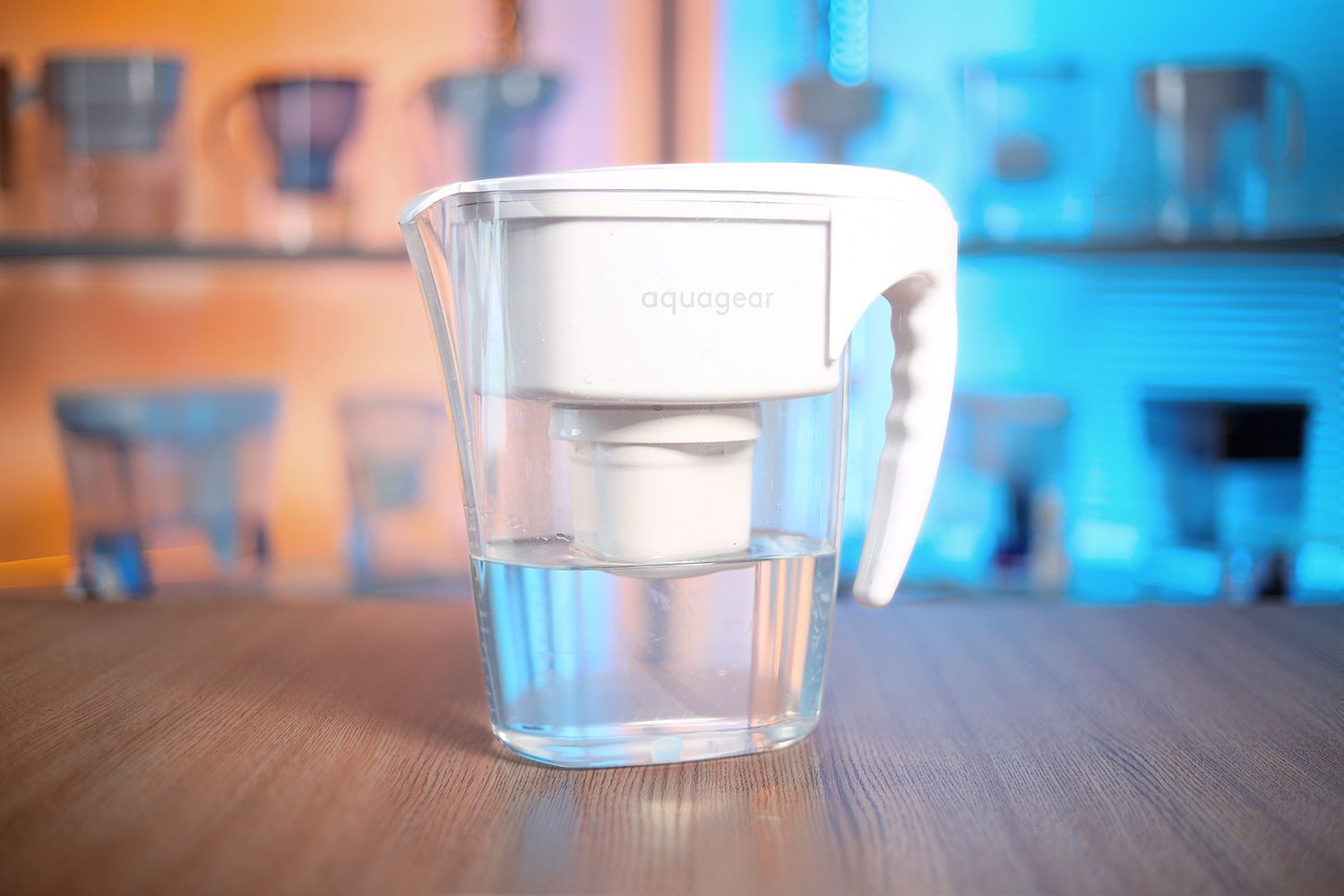
Things We Like
- Highly effective against chlorine
- Fast flow, short wait time
- Long lasting filter (6 months - 120 gallons)
- Easy to refill
- Comes with lifetime warranty
Things We Don’t Like
- Tricky to put together
- Awkward handle design
- High price upfront
While we always recommend refilling your pitcher as soon as the water is used up, forgetting to do so isn’t a problem with this model. The fast flow rate means it takes less than 30 seconds to produce a full glass. You don’t have to compromise water quality for fast speed, either. The US-made filter piece reduced chlorine in our test water from 10+ ppm down to 0.5 ppm, making it the best performer among all the filter pieces we’ve tested thus far. Most importantly, all our three testers unanimously loved the natural taste of the filtered water. The Aquagear filter pitcher is the only product this brand makes, and they’ve certainly nailed it.
In terms of design, the Aquagear filter pitcher really stands out, though we found through repeated testing that it might not make it better. In particular, we’re not fans of the gimmicky handle design. It also doesn’t have a replacement indicator, but with the filter lasting so long (6 months), you probably don’t need one. On the other hand, the pitcher is made with high quality, durable materials. Aquagear is so confident in its build that they offer a lifetime warranty—if it ever breaks, they’ll replace it. The 10-cup capacity also makes it a better fit for slightly larger households compared to the Brita Metro, while still fitting in your fridge’s cooling compartment.
With so many good things to talk about it, what sets the Aquagear a little back on our recommendation list is its price. A single filter can cost nearly $45. The silver lining is that it lasts half a year, and you can save 10-15% by buying in a bundle or subscribing to their program for scheduled deliveries.
Read our full Aquagear 10-Cup Filter Jug in-depth review
ZeroWater 10 Cup Pitcher
Best for Zero TDS
For those who prioritize a low TDS value, the ZeroWater filter pitcher is your best bet. Using the same test water, this pitcher returned 0 ppm every single time, while all others fell into the range of 50-70 ppm. The pitcher comes with its own TDS meter so you can verify. Don’t worry about it being biased: We’ve tested the meter on water produced by other pitchers, too, with consistent results.

Things We Like
- NSF 42 & 53 certified filter
- Brings TDS (total dissolved solids) value to 0
- Includes TDS meter
- Features spigot for easy dispensing
Things We Don’t Like
- Slow flow
- Lacks refill door
- Lid, filter tray, and corners feel unpolished
The ZeroWater pitcher comes with a huge, heavy filter piece, featuring activated carbon and a duo bed ion exchange resin. It’s one of the rare pitcher filters to be NSF-certified against both standards 42 and 53 to remove chlorine, lead, chromium, and other nasty heavy metals that you definitely don’t want in your water. The filtered water is crisp, but not as “sweet” as your mineral water. Our testers describe it as having a similar taste to that made by a reverse osmosis system.
Unfortunately, the long filter piece really slows down the flow. So if you need water for a whole pot for tea, it’s best to prefill in advance. Alternatively, get the 23 cup version, which also has a slow flow rate but at least, can contain more water at once.
We love that the TDS meter tells you the actual condition of the water, which makes better sense than basing replacement on a timed schedule. The manufacturer recommends changing the filter when the TDS value reaches 6 ppm, but as mentioned, other filter pitchers generally produce water 10 times that amount. You might extend its use beyond the suggested lifespan. Replacement is more complicated than your typical Brita, but still so straightforward we didn’t need to refer to a manual.
Similar to the Aquagear, the ZeroWater pitcher has a rather rough look, compared to the sleek, seamless, elegant design seen on many others, such as the Waterdrop Chubby or LifeStraw. On the other hand, it’s sturdy, BPA-free, and despite the bulky size, will still leave plenty of space in the cool compartment of your fridge. A standout feature is the built-in dispensing spigot, which is rare on a pitcher of its capacity. This eliminates the need to lift and pour, making its heavy weight a non-issue.
Read our full ZeroWater 10 Cup Pitcher in-depth review
Waterdrop Chubby 10-Cup Pitcher
Best Design
The Waterdrop Chubby is one of the very few that managed to impress us in both performance and aesthetics. It comes with an NSF-certified filter that takes just a little over 20 seconds to produce a full glass of water, and a pitcher that you may actually want to display on your kitchen counter.
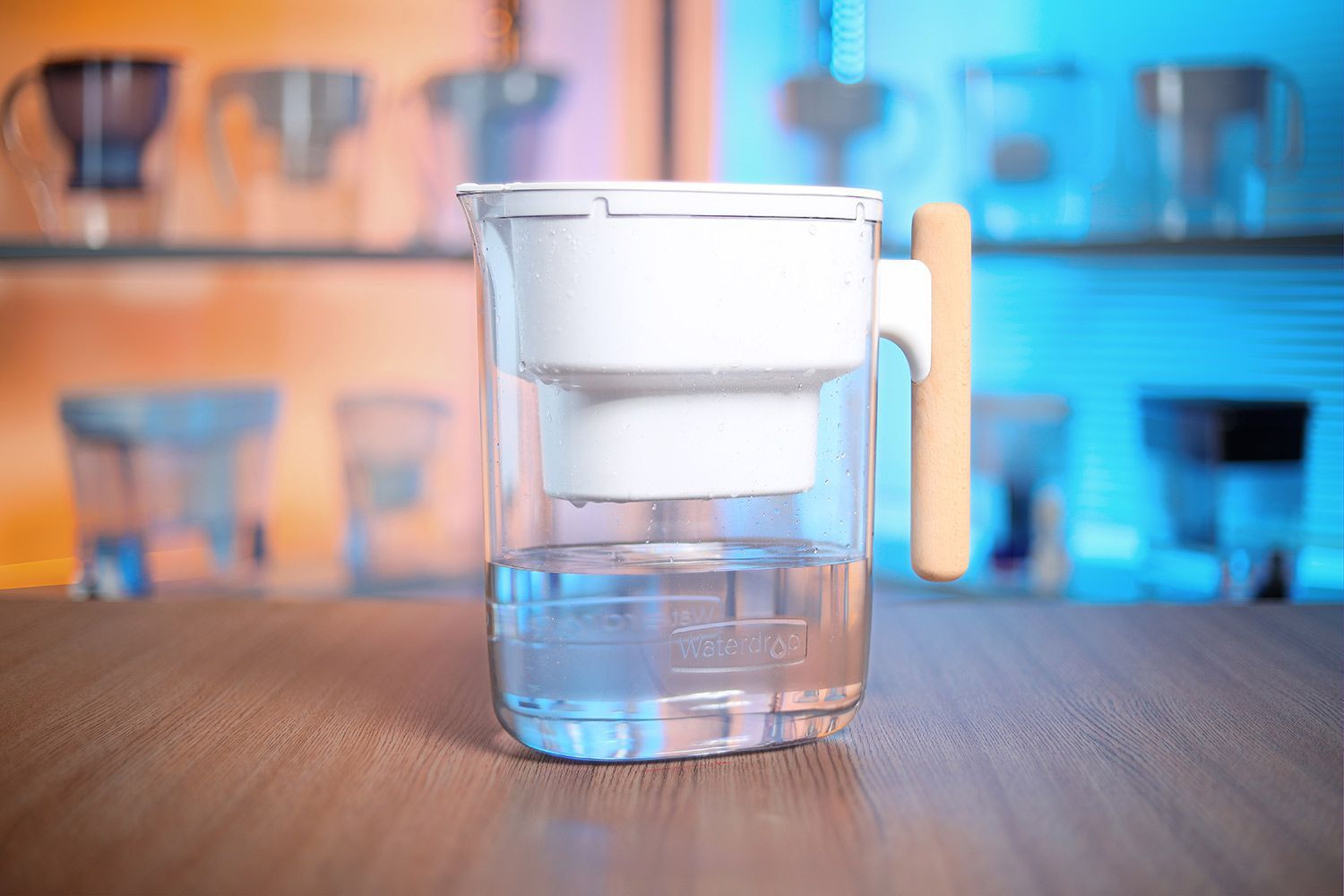
Things We Like
- NSF-certified filter
- Highly effective against chlorine
- Excellent flow rate
- Elegant design with rounded corners and wooden handle
- Polished details
Things We Don’t Like
- Potentially confusing replacement light color
If you’re into elegance, this one really stands out. It’s shiny, slim, despite its name, and all the corners are rounded, giving it a soft, sleek look. Having tested a dozen pitchers and dispensers, we were amazed at how easily, but securely, the parts could fit together on this one. The high quality materials make the parts look slim and light without giving off the feeling of flimsiness.
Likewise, its replacement indicator is built in a lot more subtle than what you usually see on a Brita pitcher (except the Brita Style — which also features a pretty design but has a rather miserable flow rate). The pour-through door is thin and clear, giving it a more subtle, sophisticated look. We love the touch of the wood handle, which brings organic texture and warmth without compromising on stability (take notes, Aquagear!). Its simple, streamlined construction makes it incredibly easy to install and clean, too.
And there is more than meets the eye with this pitcher. Instead of spreading long down like the filters of the ZeroWater or LifeStraw, which slows down the flow, the double filter on this pitcher is short and slim. That helps it take advantage of gravity, which contributes to its unmatched filtering speed. Consistent with the NSF certification, it was able to bring the chlorine in our test water (which had 250% the amount allowed for human consumption) to a safe level. Our testers gave it 9.3 out of 10 for the crisp but naturally sweet taste of the filtered water.
The only reason the Waterdrop isn’t our Best Buy choice is the (very) slightly higher price compared to the Brita Metro. Still, for those who prioritize aesthetics alongside performance, the extra cost is well worth it.
Read our full Waterdrop Chubby 10-Cup Pitcher in-depth review
LifeStraw Home Water Filter Jug
Best for One-Person Home
The LifeStraw filter jug isn't just visually distinctive—it also features a unique filtration system certified to remove chlorine and a wide range of contaminants. Among all the pitchers we've tested, it delivered the best-tasting water, earning a perfect score from our testers. However, its slow flow rate makes it more suitable for a one-person household.

Things We Like
- NSF certified filters
- Highly effective against chlorine
- Elegant look
- Elegant but robust, durable parts
- Great tasting water
- Secure lid, no overflow
Things We Don’t Like
- Slow flow rate
- Filters are tricky to replace
- Silicone parts on lid can be difficult to maintain
The LifeStraw’s filtration system is more complex than most. Its long, two-stage filter consists of a microfilter with dozens of tiny straws (hence the name LifeStraw), designed to remove 30 contaminants, including bacteria, microplastics, lead, mercury, and harmful chemicals. Water then passes through an activated carbon filter for further purification, resulting in crisp, refreshing water. This system is remarkably effective—not only reducing chlorine from over 10 mg/L to just 0.5 mg/L—but also earning a 10/10 taste rating from all three of our testers.
Aesthetically, the LifeStraw closely resembles a standard water jug. Its truncated cone shape provides extra stability while still fitting neatly in the fridge. The tall design requires a greater tilt when pouring, but thanks to its secure lid, spills are never an issue. While the handle feels a bit thin, we found it comfortable and easy to grip.
Surprisingly, despite its superior water quality and sleek design, the LifeStraw received only a 6.6 overall score in our testing. That’s because its strengths come with trade-offs. The highly effective filter is also the slowest we tested, with a flow rate of just 0.5 ml/s (compared to the Brita Metro’s 9.5 ml/s!). It’s also slightly more complicated to assemble, and while the silicone rings on the lid provide a secure fit, they require extra care when cleaning.
That said, for those who prioritize top-tier water quality and don’t mind refilling their pitcher in advance, the LifeStraw remains an excellent choice.
Read our full LifeStraw Home Water Filter Jug in-depth review
Brita UltraMax 27-Cup Filter Dispenser
Best for a Family
For families who find a full option water dispenser too much and a pitcher too small, the Brita UltraMax strikes the perfect balance. Its fast and effective Brita filter piece and the 27 cup capacity mean you will always have clean water for drinking and cooking in the home.
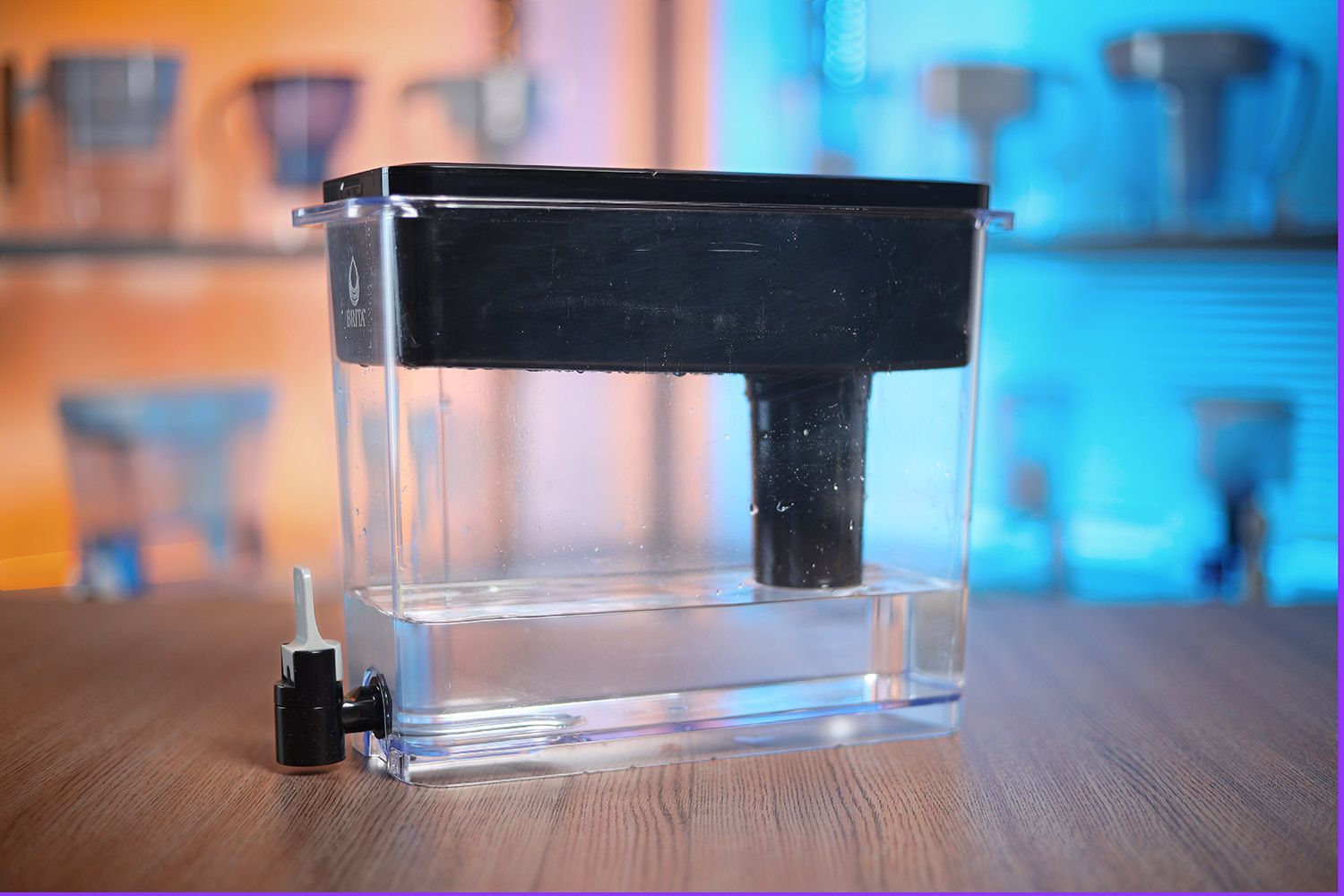
Things We Like
- NSF certified filters
- Compatible with both Standard and Elite filters
- Fast flow rate
- Large capacity
- Flap opening for easy refilling
- Durable, flexible spigot
Things We Don’t Like
- No side handles
- Opaque reservoir
This filter dispenser is compatible with both Brita’s Standard and Elite filters. Both are easy to install and remove, and the replacement indicator on the lid works with either one. We opted for the Elite in our tests simply because of the longer filter life (120 vs 40 gallons) and stronger filtration capabilities (it’s NSF 53 certified, while the Standard filter is only certified against NSF 42). As expected, it worked great against chlorine. The flow rate was also excellent, unlike other large-capacity dispensers we’ve tested, such as the PUR Plus 30 cup or the ZeroWater 23 cup. The filtered water also passed our taste test with flying colors, scoring 9.7 out of 10.
The dispenser has a capacity of 27 cups, which translates to about 1.6 gallons of water. Still, thanks to the simple, frills-free design, it can fit in the cool compartment of a fridge without problem. The lack of side handles saves space, but it also makes transferring a fully filled dispenser into the fridge trickier—at least for the writer, a 5’2” woman with short, tiny arms. Thankfully, you can refill without removing it from the fridge— just pull it out, open the flap on the lid, and pour water in. We also appreciate its flexible two-way spigot, which you can lock in place when dispensing larger amounts of water.
At first, we thought the thin plastic walls looked a little flimsy, but it’s been over a year of use and they’re still intact—not even a scratch in sight. Just note that it’s not to meet the dishwasher. If there’s something we’d change, it would be to make the reservoir clear so you could see when to refill it without guessing or opening the flap to check. Even so, the Brita UltraMax is without a doubt the best household water filter dispenser for a 3-5 person home.
Read our full Brita UltraMax 27-Cup Filter Dispenser in-depth review
Products You May Also Like
- Brita Style: Its design isn’t all about meeting the eyes—the rounded corners, clear reservoir, and smart refill door also makes refilling and cleaning a breeze. You’ll find yourself reaching for it all the time! This pitcher uses the newer Brita Maxtra+ filter, which claims to remove more contaminants than the Standard filter. However, the slower flow rate really affected its rating.
- Brita Everyday: One of the earliest versions of Brita pitchers, the Everyday remains widely popular. It comes without any whistles and bells: no trap door, no replacement indicator, and a rather plain design, so the price is very agreeable. More importantly, it’s a tried and true filter pitcher that gets the job done.
Our Expertise
The ShouldIt team has been researching and writing about water filters since 2019, when we were known as HealthyKitchen101. Over the years, the team has been meticulously testing various filter models since, although in a less structured setting.
In 2021, we took a significant step forward by purchasing filter pitchers in bulk for standardized testing. We spent weeks at a time examining how each filter works, developing consistent testing methods, and personally handling every aspect—assembling, disassembling, refilling, replacing filters, storing filled ones in refrigerators, dispensing, and cleaning each model repeatedly.
This hands-on approach ensures our reviews and recommendations come from first-hand experience that consumers can rely on when choosing the best water filter pitchers for their needs.

